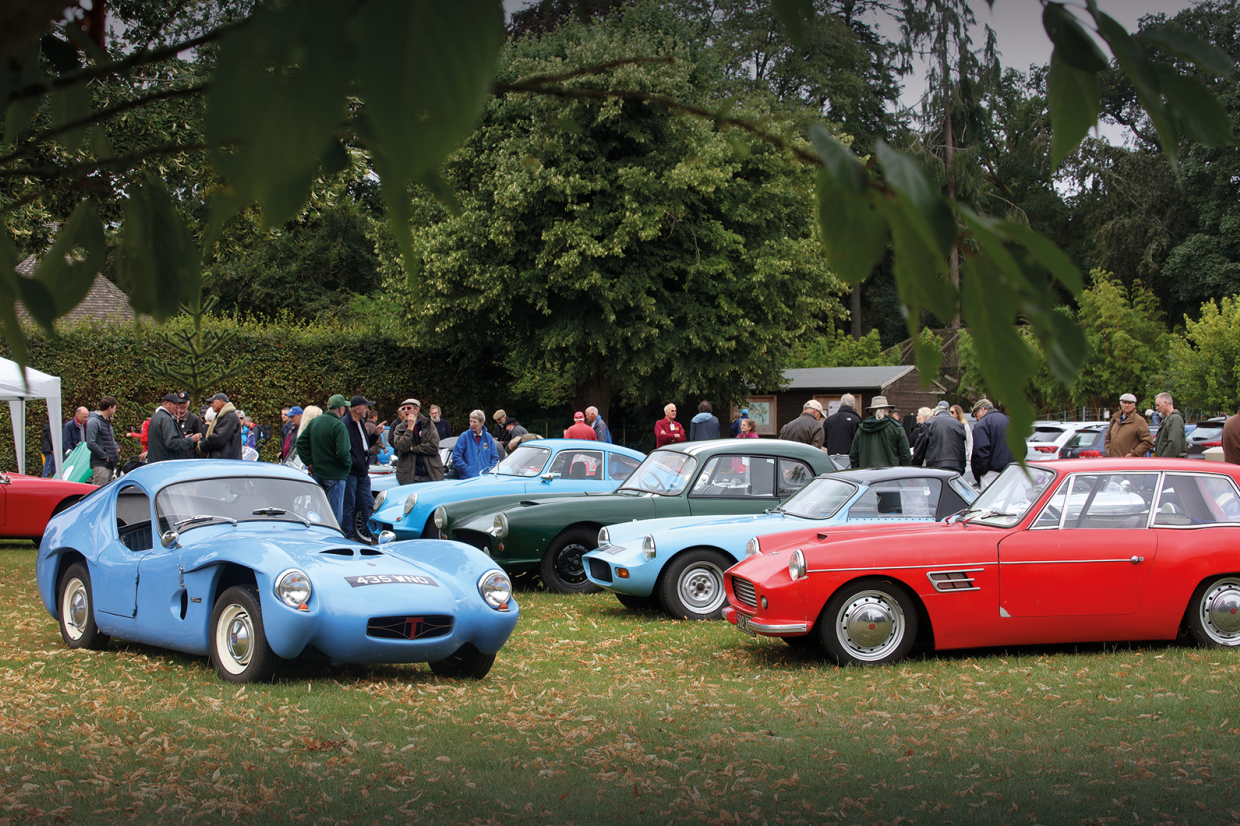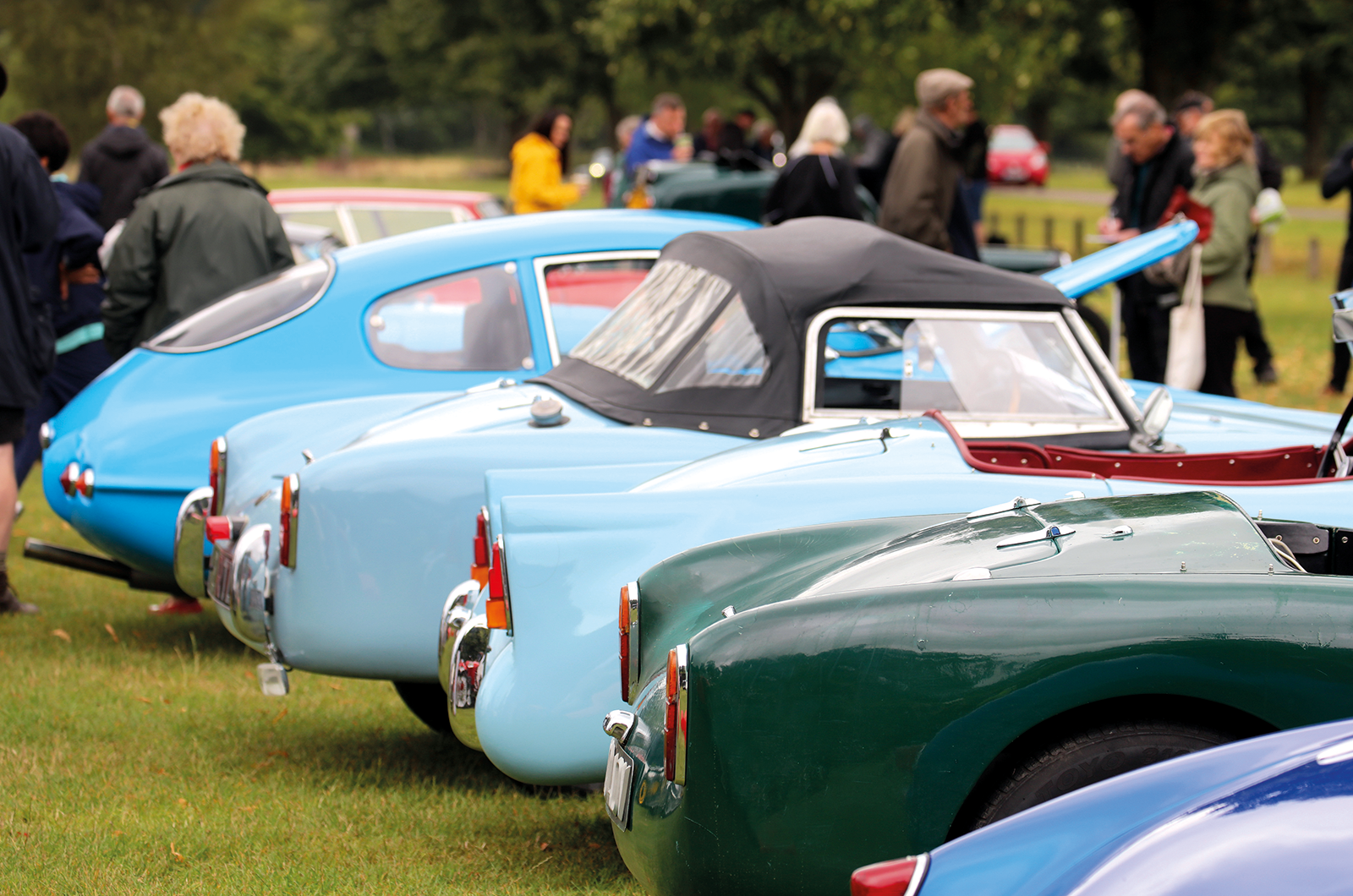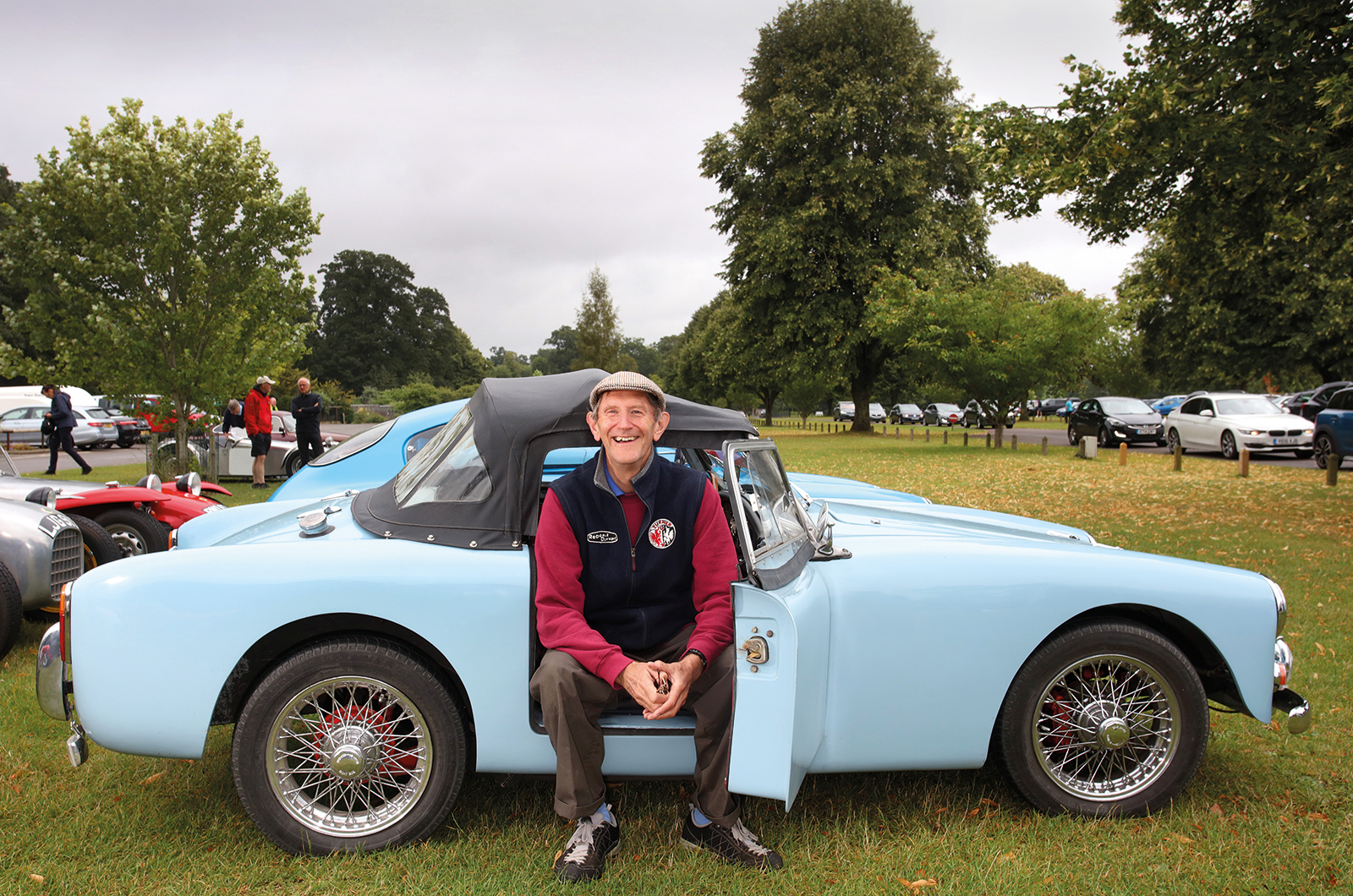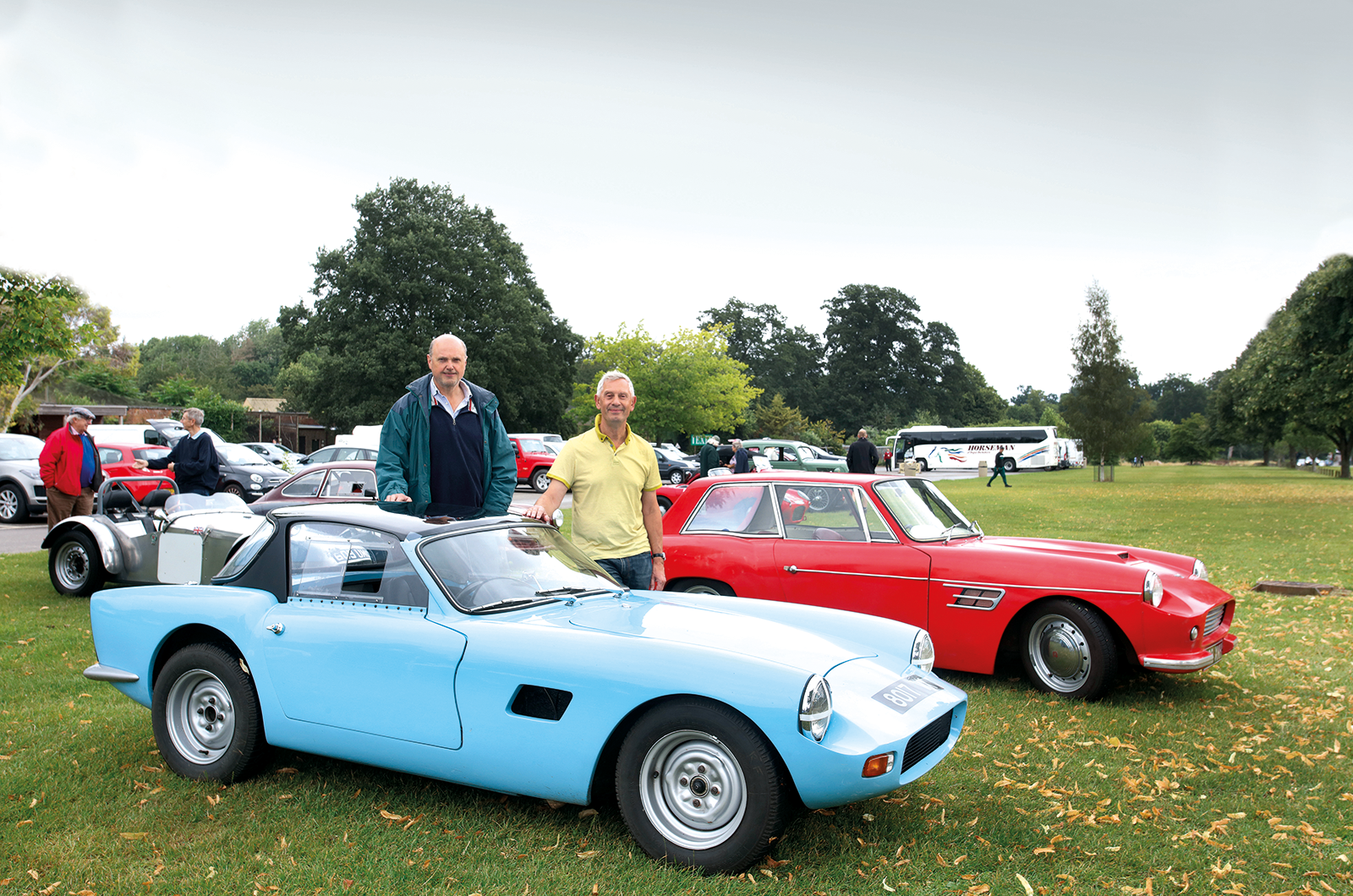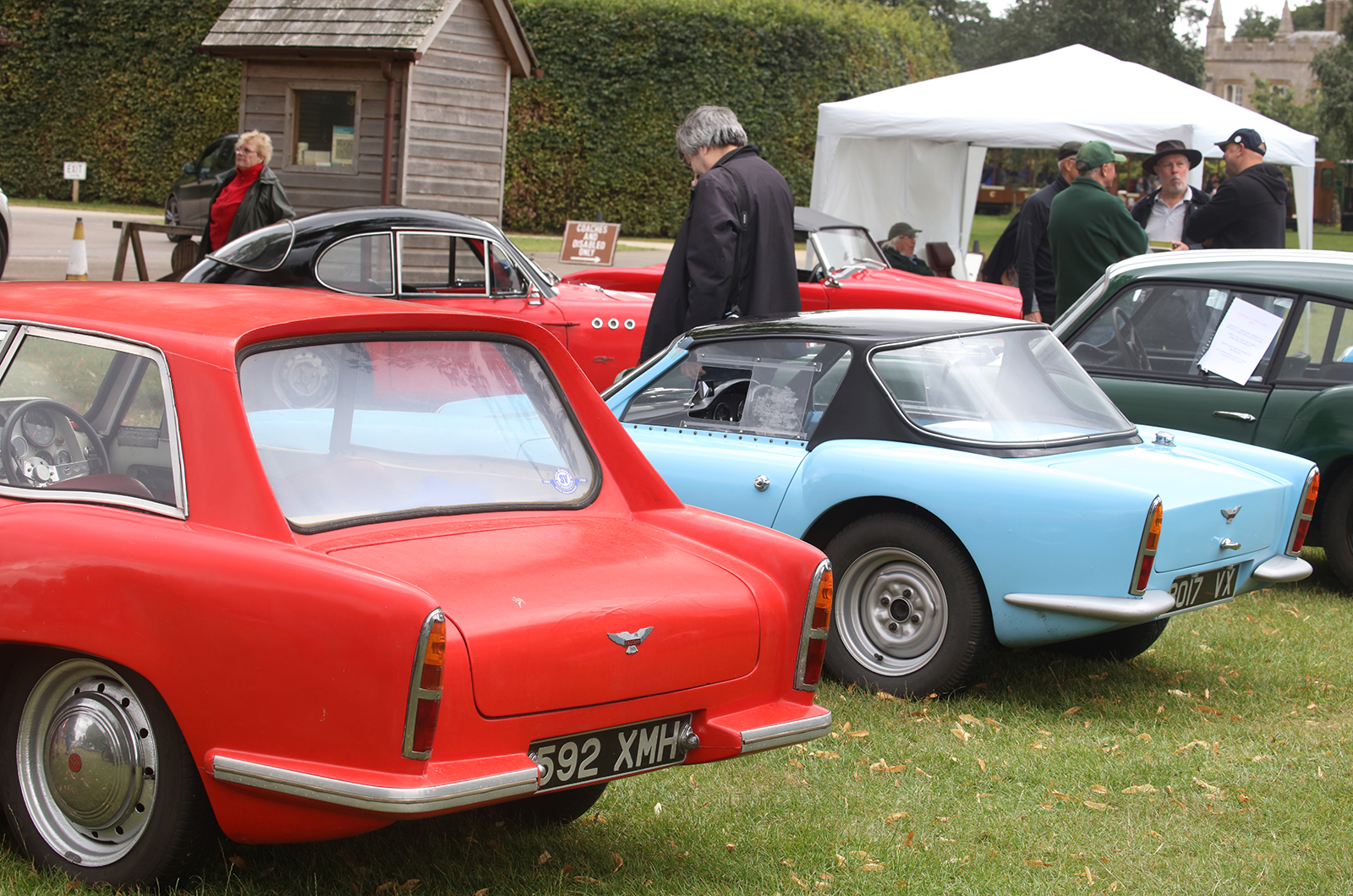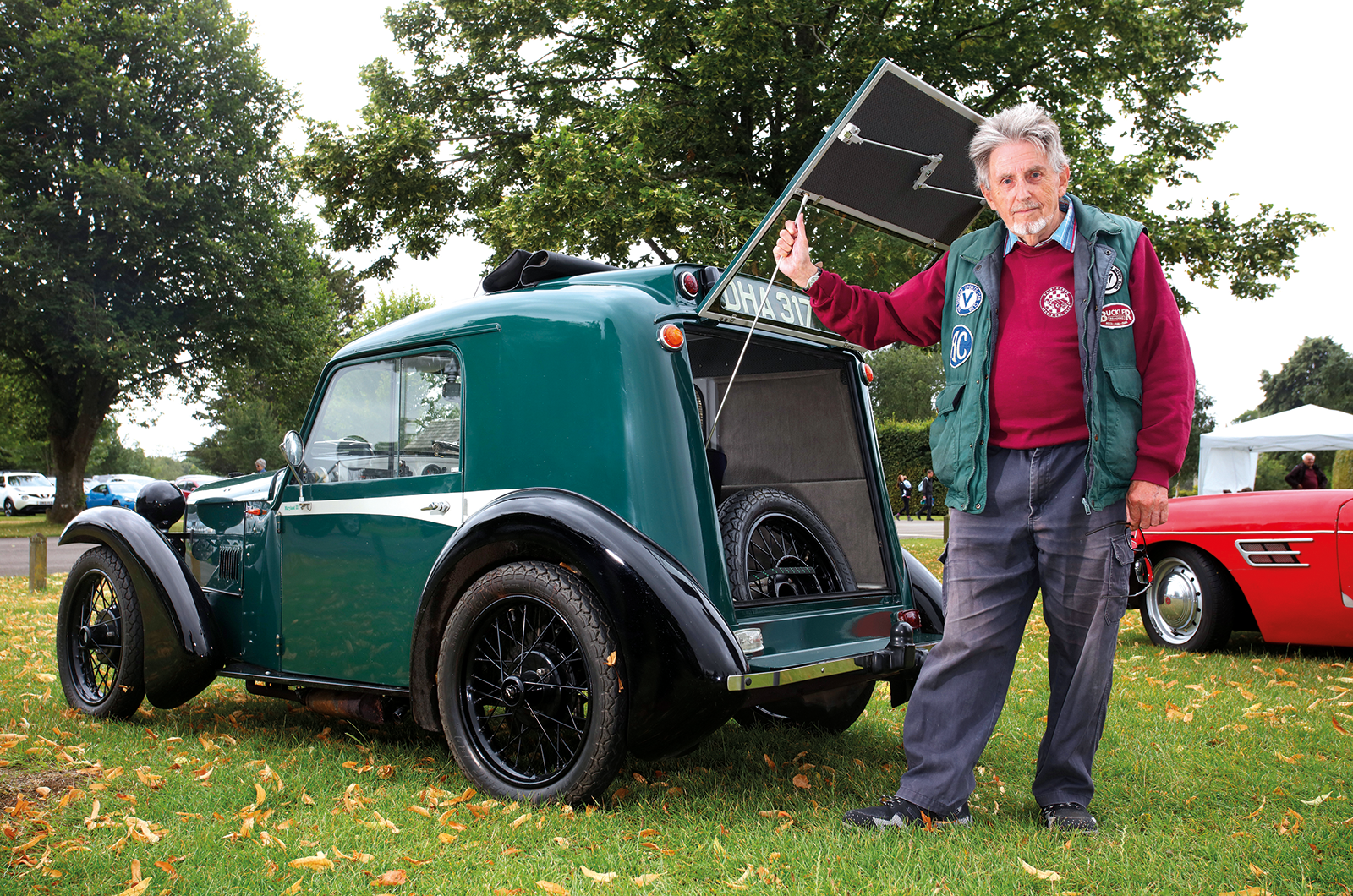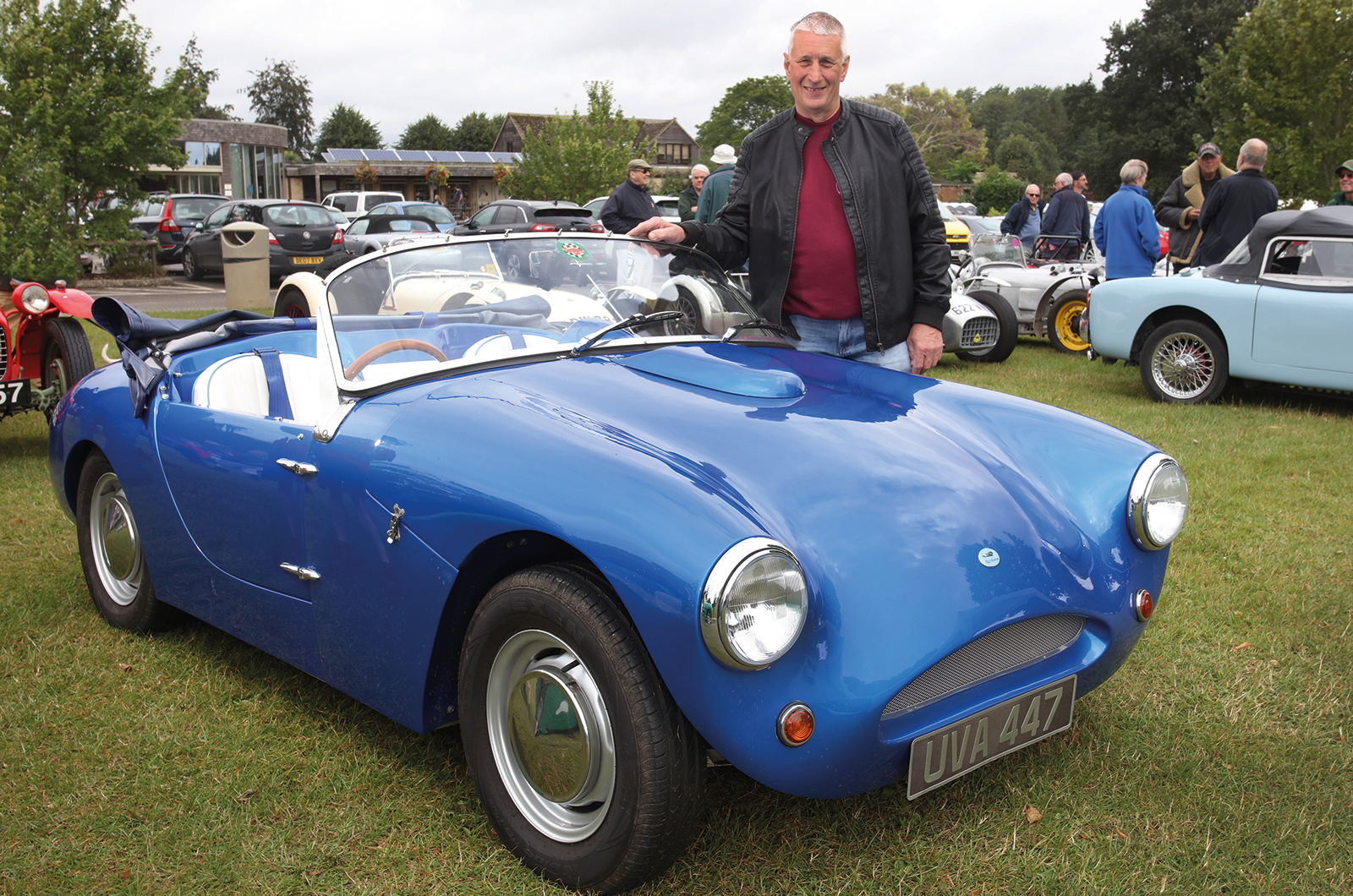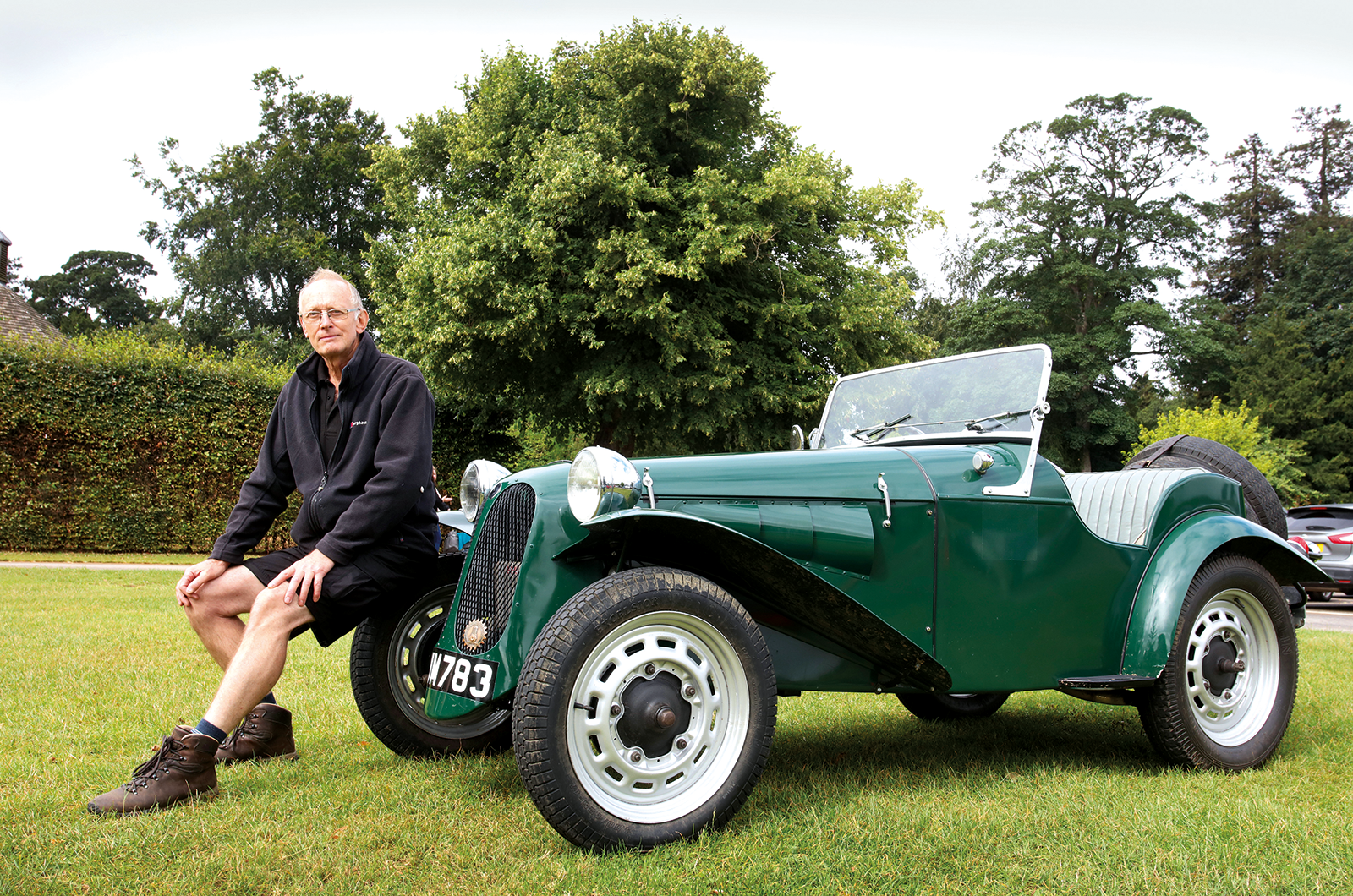Roe doesn’t like throwing stuff away. By 1986 he’d assembled a collection of Austin Seven parts including an old Ruby saloon body and some Big Seven running gear.
They needed a suitable engine, and a Reliant Robin 750cc light-alloy four-cylinder with 32bhp and synchro gearbox fitted nicely. The Ruby body was lowered and turned into a hatchback, with elegant helmet wings, and Minivan upper doors dictated the roofline.
A Fiat 500 provided the sunshine roof, a Seven Ulster the dash and a Reliant Rialto the radio.
It has all been assembled with superb workmanship, and bristles with clever details. It’s the first Special I’ve seen with proper door seals and guttering, interior trim details to factory standards, and windscreen wipers that actually do the job.
Dave Bumstead: Fairthorpe Electron
Dave Bumstead’s Fairthorpe Electron uses a Ford 1600cc crossflow engine, mated to a five-speed gearbox
Don ‘Pathfinder’ Bennett was a much-decorated Second World War bomber pilot who came early to the kit car market.
His products had the dubious cachet of being more basic and worse-finished than most of their rivals, but they were cheap: the complete Electron Minor kit with a Standard 10 engine cost £425.
It was a two-seater, but the wide cockpit allowed a child to sit, in those less safety-concious days, on a little cushion on the transmission tunnel. Unhappy earlier efforts used motorcycle engines, and the terrifying Zeta squeezed a full-race Ford Zephyr unit into an 88in wheelbase.
But the Minor was the big seller. Dave Bumstead bought his in a derelict state eight years ago, and rebuilt it to a standard of which original Fairthorpes could only dream.
Its gleaming metallic bright blue paintwork is echoed in the bright blue interior, with white upholstery and bright blue seatbelts. Even the engine block and rocker cover are bright blue.
Fairthorpes purported to be complete kits rather than Specials, but this car shows as much individuality – and improvement on the original – as any self-built car.
Steve Strutt: Dellow MkI
Steve Strutt’s Ford-powered Dellow MkI was built to compete in trials
The Dellow was built by Ken Delingpole and Ron Lowe in Alvechurch, south of Birmingham. It used the 1172 Ford sidevalve engine and running gear in a sturdy A-frame chassis, and was sold as a fully-built production car.
It was designed for the then very popular sport of trialling, while also being road-usable, and more than 200 were built.
The Ford front axle was unsplit, because this was thought to be better on muddy climbs, and doors were only available on the MkII, as an option.
At the age of six Steve Strutt was taken to a trial and allowed to sit in the passenger seat of a Dellow, and it made an unforgettable impression. But it wasn’t until 2003 that he was able to buy a bare chassis and enough bits to recreate his MkI.
The engine is the later 100E Anglia unit, with Aquaplane alloy head, and the Ford rear axle rides on coil springs, which was a MkII feature.
It also boasts a ‘fiddle brake’, a handbrake that you push forward to work on the front wheels and back to work on the rear. Very useful when inching up a slippery slope.
Dave Malins: Tornado Tempest
The unique fastback roof fitted to Dave Malins’ Tornado Tempest was fabricated by a previous owner
From the start, Tornado Cars of Rickmansworth offered a rigid ladder chassis to go with its racy glassfibre bodies.
The Typhoon was typically 1172-based, but the Tempest used the Ford 105E engine and had wishbone and coil front suspension, with coils for the live rear axle. The Thunderbolt was similar but with a Triumph TR3 engine, and the only one made was successfully raced.
Just as Rochdale moved on to the Olympic, so Tornado moved upmarket in 1962 with a very attractive full-kit GT, the Talisman. Around 180 were made before the company failed in 1964.
Dave Malins, the Tornado registrar, says only 15 Tempest chassis/body kits were sold, of which four remain – including one in a Spanish museum. His, like so many Specials, has had a chequered life. Early on a very tall owner extended the roof to create a distinctive fastback, and later it ended up as an Escort-powered hot rod.
Malins bought the car in 1980 and spent 10 years rebuilding it. He has fitted a correct 105E engine but retained the fastback as a period modification.
It’s very usable on today’s roads, and in the past 30 years it has done some 40,000 miles.
Images: James Mann
This was originally in our November 2021 magazine; all information was correct at the date of original publication
READ MORE
Lotus Six: flyweight flyer
Sevens’ haven: meet the surprise Austin Seven collector
Unique Bentley T-type Special: Crewe cut
Simon Taylor
Simon Taylor is C&SC’s Editor at Large and has been associated with the brand since he launched it in 1982
